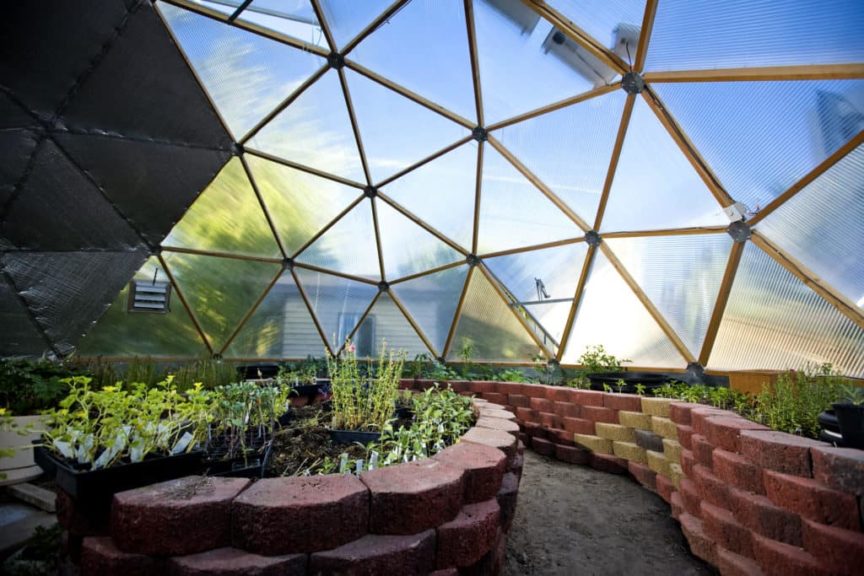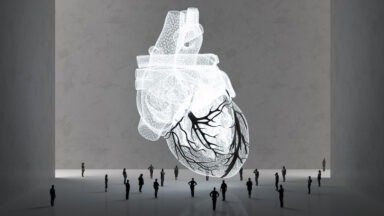Buckminster Fuller’s Spaceship Earth Is More Relevant Than Ever

How do we make the world work for 100 percent of humanity, in the shortest possible time, through spontaneous cooperation, without ecological damage or disadvantage to anyone? That was the question posed by R. Buckminster Fuller when he devised the Operating Manual for Spaceship Earth, the concept that we are all astronauts inhabiting a spaceship, hurtling through the universe, with a greater purpose than just being muscle-reflex machines.
The Earth is a Spaceship
There is a common experience that is shared between astronauts who traveled to the moon and looked back on Earth. A sense of enlightenment, utter transcendence, and overwhelming bliss from the beauty and perfection of Earth in its entirety. At this point astronauts understand the importance and necessity of taking care of our planet and the collective need to coexist peacefully.
Though he never went to space to experience this profound perspective, Fuller shared this sentiment and devoted his life to modeling a future that would embrace it. He was a designer, inventor, author, architect, and systems specialist, but most notably a visionary whose ideas focused on considering the greater picture even when working on the minutiae.
Fuller’s vision for humanity focused on the premise that our intellect gave us an innate duty to overcome physical constraints, ad infinitum, with our ability to think, reason, and solve problems. With this, he coined the word ephemeralization, the concept that the sum can be greater than its parts; that we have the ability to do more and more with less and less, until we can achieve everything with nothing.

Though this might seem paradoxical at its extreme, the utility that we have been able to achieve with technology has followed this line of thinking to a certain extent. Our ability to go from wired to wireless technology or fossil fuels to alternative renewables are examples that embody Fuller’s vision.
This is counter to the Malthusian line of thought, in which exponential population growth will inevitably outpace food production. Fuller argued that through design and technology there should be no reason to have people suffering and starving on Earth. He aimed to create a world that worked for everyone, employing technology to spread our limited resources and satisfy a growing population.
His vision became one which focused on a utopian society of sorts, in which a ‘critical path’ could be developed to cooperatively pilot Spaceship Earth. By using foresight that looked outside of the box and focused on systemic problems in every aspect; solving current problems with the prudence to also solve future ones.
Richard Buckminster Fuller
Fuller’s upbringing seemed to incubate the eccentric genius that he later became in life. His education started at a Froebelian kindergarten, where art and creativity were given as much encouragement as traditional education. Later in life, Fuller attended Harvard though he was kicked out twice, recognizing himself as a non-conformist, misfit.
After serving a brief stint in the Navy, Fuller and his father founded a company that provided affordable, lightweight, weatherproof housing, a concept that would later become the foundation of his design philosophy. But the company eventually failed, and shortly after his daughter passed away from polio and meningitis.
Fuller contemplated suicide when his family fell into financial hardship, which was compounded by the self-imposed guilt from his daughter’s death. Until one day, he had a profound experience in which he felt himself levitating off the ground, encapsulated in a sphere of white light. A voice told him:
“From now on you need never await temporal attestation to your thought. You think the truth. You do not have the right to eliminate yourself. You do not belong to you. You belong to Universe. Your significance will remain forever obscure to you, but you may assume that you are fulfilling your role if you apply yourself to converting your experiences to the highest advantage of others.”
After this turning point Fuller began to teach at Black Mountain College in North Carolina, an experimental school in Asheville, that had a non-hierarchical structure, atypical to most universities. There, students and teachers were considered peers and there were no grades, degrees, or planned curricula. Students decided when to graduate and education was equally balanced with art, farming, co-op labor, and construction projects.

Here, Fuller built his first geodesic dome which he would patent and become known for. This design would later become the iconic geodesic dome, Spaceship Earth, at Epcot Center in Disney World, an homage to Fuller and Walt Disney’s shared dream of a utopian society. EPCOT itself is an acronym that stands for Experimental Prototype Community Of Tomorrow.
The Montreal biosphere, constructed for the 1967 World Fair is another commonly recognized geodesic dome designed by Fuller that remains to this day.
Though the first geodesic dome had already been ideated and built some 30 years prior, Fuller was the first to patent it and incorporate it into his schema for its myriad uses. He found maximum utility in the design as it used minimal material to provide the greatest amount of volume in a certain area.
A geodesic dome is a hemispherical structure consisting of rigid triangular elements, or an omni-triangulated surface. Fuller was attracted to it for its strength and simplicity, inspiring the construction of hundreds of thousands of them throughout the world. But despite, the avant-garde popularity of the geodesic dome, it was just one design feature that may have overshadowed his larger worldview.
Livingry not Weaponry
One of Fuller’s main concepts was that of livingry, a word he created in direct opposition to weaponry. Livingry touted inventions that supported and enhanced life, ideas, and objects; enriching and advancing human existence, rather than contributing to its destruction. He imagined what could be achieved if the aerospace sector of knowledge was applied only to producing technology that advantaged all of humanity, rather than divisive weaponry. He saw war as obsolete and the threat of total destruction as imminent.
Fuller viewed humanity as an experimental initiative of the universe. That experiment was to see if the universe, in all its complexity, could “maintain the integrity of eternal regeneration” while allowing us, humans, to discover and use mathematical laws to maintain that integrity on our scale.

The answer to this was yes, inspiring Fuller to develop an array of consumer household designs to fit his ephemerilized livingry concepts. He even coined another word to sell his ideas: dymaxion, a portmanteau of dynamic, maximum, and ion. He conceptualized a dymaxion house, dymaxion car, dymaxion bathroom, and others to solve every contemporary design flaw, though most never came to fruition, outside of fringe communes and individual projects.
Though his worldview never truly took off, today we can see a lot of Fuller’s sentiment in the tech industry. Whether directly inspired by Fuller or not, many modern digital solutions aim to solve all of our problems with ephemeralization, using the least amount of energy to gain the most utility; the internet being one of the greatest examples. Though he passed away less than 40 years ago, it would be interesting to know what might he think of our society today. Will we ever achieve a global society like Fuller envisioned?
How Cryptocurrencies Like Bitcoin Can Democratize Money and Society

As cryptocurrencies like Bitcoin break new records seemingly every day, could this lead to a financial and cultural revolution? Or are we not quite there yet?
Cryptocurrencies have recently gained popularity as an alternative to conventional monetary systems. Blockchain is a system in which a record of transactions made in Bitcoin and other cryptocurrencies are maintained across multiple computers that are linked in a peer-to-peer network. Cryptocurrency has no centralized bank controlling the flow of money, but rather a decentralized system controlled by algorithms.
Crypto has been hailed as a way to democratize finances for all, not just wealthy elites. But with the rise in popularity, what are the potential pitfalls of these online currencies?
“Blockchain is a way of digitally marking the development and moving around of this money—you’re making sure that it can’t be counterfeited. They do it in such a way that it’s anonymous and decentralized, but secure,” Zeus Yiamouyiannis, author of Transforming Economy, said.
“The current monetary system can be manipulated; the supply can be manipulated to benefit very few people over the many. As we’ve been seeing over the past few decades, the same pattern keeps emerging and it’s growing, and that is greater and greater gambling by the big boys, to the point where they inherently fail through their greed. And guess who bails them out 100 percent of the time? The little guy who had absolutely nothing to do with it,” Yiamouyiannis said.





































